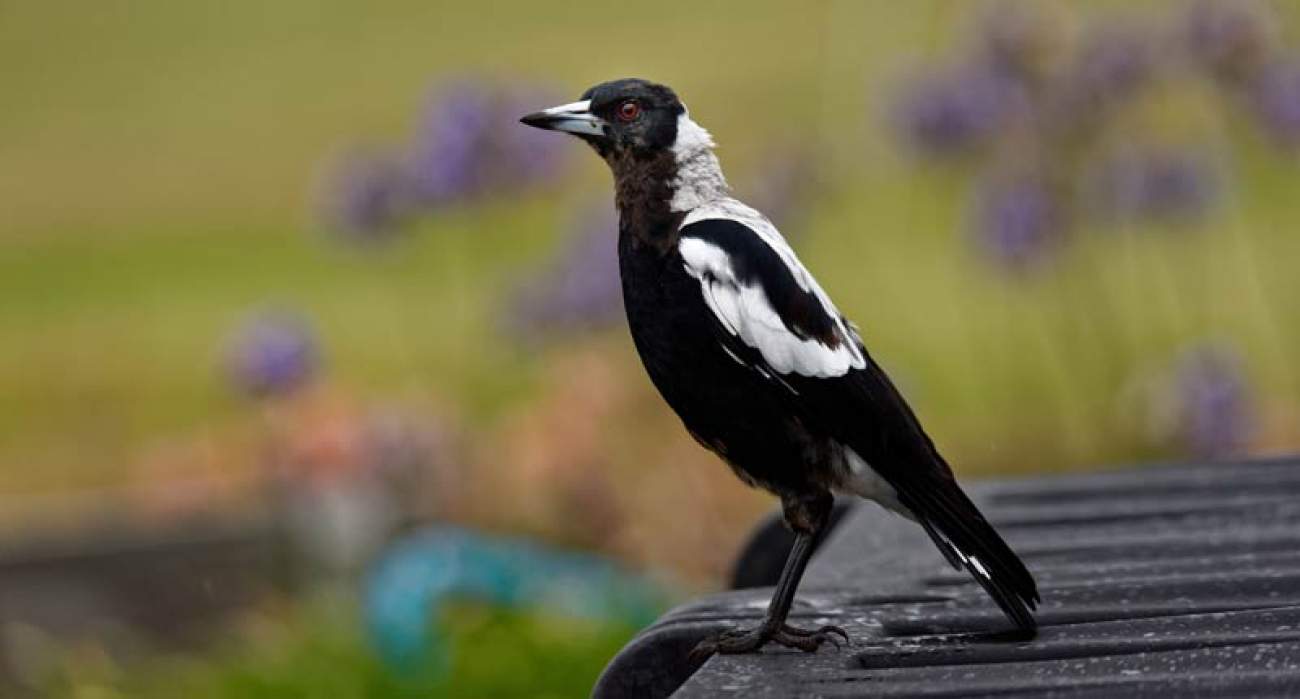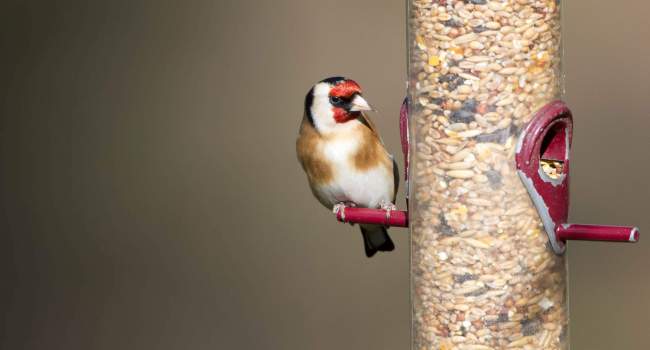
Garden birds: to feed or not to feed?
Dr Kate Plummer explores the effects of feeding on bird populations.
Kate's principal role is to conduct research into avian responses to environmental change, particularly urbanisation. Kate uses BTO’s large-scale citizen science datasets and novel field surveys to address important questions about urban wildlife.
Relates to projects
Related Publications
Multiple independent studies indicate that the genuine pleasure we gain from feeding birds is what motivates us to keep doing it. Nowhere is this more evident than in Australia, where vast numbers of people put out food for wild birds despite widespread opposition from wildlife and conservation agencies.
But irrespective of the joy feeding might bring us, the practice is built upon a basic desire to help birds, especially during hard times, and undoubtedly many people care about the consequences of their actions. Indeed, having researched the impacts of garden bird feeding for over 10 years now, the question I most frequently get asked is: ‘Should we really be feeding garden birds – is it good or bad?’
Are we interfering with the natural rates of survival of our garden birds? There is by no means a simple answer.
Here in the UK, we are putting vast amounts of supplementary food into the environment for birds every single day. In fact, work by Dr Melanie Orros and Professor Mark Fellowes at the University of Reading has estimated that the volume of supplementary food provided has the potential to support as many as 196 million garden birds. Astonishingly, that’s approaching half the total number of birds thought to be at large in the UK countryside*.
Arguably the greatest concern many people have is that birds will become reliant on these handouts. But there is no discernible evidence that garden feeders create dependency (other than during extreme weather conditions). On the contrary, research suggests that food gathered at feeders typically makes up less than 20% of the diet of Blue Tits in winter, and, irrespective of how readily available feeders are, parent birds almost exclusively feed their chicks on natural food stuffs (e.g. in Australian Magpies and tits). Halting the supply of feeders, even after 25 years, appears to have little impact on birds’ winter survival. In other words, supplementary food is just that: supplementary. There is no reason to suggest that feeders cause birds to lose their ability to forage for natural foods.

But, inevitably, feeding does affect the birds we see around us. We recently showed that our changing bird feeding habits can be linked to the large-scale restructuring of garden bird communities and the growth in urban bird populations across Britain. Feeders have become better at attracting a broader range of species over time, with many species using feeders much more frequently now compared to 40 years ago. As a consequence the populations of feeder-using species have increased significantly in urban areas of Britain, while those of other urban birds (which do not use feeders) have remained stable on average.
So, are we interfering with the natural rates of survival of our garden birds, effectively interfering in natural selection and artificially inflating the populations of our most common garden visitors? This is certainly an argument I often hear, and there is by no means a simple answer to it.
...all birds are worthy of a helping hand and the knowledge that my small intervention is playing a part in supporting our national bird populations is very rewarding.
My previous research findings have suggested that feeding in winter does enable lower quality birds (in terms of their health and reproductive potential) to survive and breed, which one could argue is an example of us influencing natural selection. But human-induced environmental changes have transformed the foraging options for birds globally. So if the survival prospects of birds are being hindered by the environmental impacts of humans on natural food supplies more widely, then perhaps our feeders are helping to redress the balance in some small way? Certainly BTO research has indicated that several farmland seed-eating species are visiting garden feeders in winter because altered farming practices have led to a depletion of natural foods.
My biggest concerns around garden bird feeding include disease risks, food contamination and poor nutrition. Pioneering research led by Dr Becki Lawson and the team at Garden Wildlife Health, alongside BTO’s Garden BirdWatch volunteers, has been instrumental to drawing our attention to the increased risk of disease transmission between birds gathered at feeding stations. But the possibility that garden birds are being exposed to mycotoxins (potentially toxic compounds produced naturally by moulds) through the use of provisioned foods is in urgent need of more research. Even though there are strict limits on the levels of aflatoxins (a family of mycotoxins) permissible in pet foods, when tested, birdseed mixes are often found to exceed them. Aside from this, more generally there is huge variation in the quality and nutritional value of commercial bird foods, with my own research showing that the nutritional composition of food supplements can impact on the health and reproductive success of fed birds.

Fortunately, we can do a lot to reduce these risks by following best practice guidelines to garden bird feeding – including offering a variety of foods from trusted sources in different locations around the garden, feeding little and often so that food isn’t exposed to the elements for long periods, and ensuring that feeders are cleaned and moved regularly to avoid an accumulation of waste food or bird droppings.
On balance, given the scientific evidence as it currently stands, I have made the decision to feed birds in my own garden, making sure I follow the guidance above. I research the foods I provide, choosing to buy from companies that demonstrate they are investing in the quality of their bird food products. For me, all birds are worthy of a helping hand and the knowledge that my small intervention is playing a part in supporting our national bird populations is very rewarding. The joy I get from watching the birds zipping back and forth through my garden while I eat my breakfast each morning is an added bonus.
Do you feed the birds in your garden? We would love to hear from you why you do, or don’t. Add your views in the comments below.
* In the most recent report produced by the Avian Population Estimates Panel (APEP) it was estimated that the UK is home to approximately 168 million breeding birds, with numbers of thought to rise to over 400 million each autumn thanks to the addition of surviving offspring, passage migrants, winter visitors and gamebird releases.
Garden Feeding Hygiene
Research analysing Garden Wildlife Health data (published September 2022) strongly suggests that trichomonosis – a parasitic disease of birds – is responsible for the decline of Greenfinch and Chaffinch in the UK.
This disease can be transmitted via infected saliva through contaminated food or water.
Trichomonosis poses no risk to humans or non-avian pets.
We recommend following these practices when feeding birds in your garden:
- Cleaning feeders regularly with soapy water (e.g. weekly)
- Providing fresh drinking water daily
- Rotating position of feeders around the garden (to avoid build-up of food waste)
- Regularly cleaning areas under feeders to remove waste food








Share this page